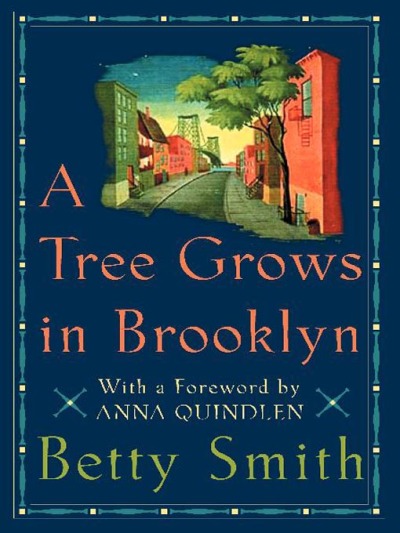I
read this novel years ago in college and forgot about it until recently.
Someone mentioned it to me and I decided to dig it out of the stacks of books
on our living room floor. It’s funny, sad in bits, sometimes gritty, and
incredibly honest and realistic. I love it.
A Tree Grows in Brooklyn was written in 1943 and
take place in Brooklyn, NY during the early 1900s. Francie Nolan is a lonely
young girl – poor, bright, and keenly aware of her surroundings. She feels dark
and drab next to her golden, handsome younger brother Neeley, who takes after
their father, Johnny Nolan. Johnny is a dreamer – a musician and alcoholic with
a loving heart; he is Francie’s only real source of affection. The pretty
mother, Katie, is practical by necessity and a bit sharp with Francie. She
cleans houses to put food on the table and pay the rent, but it’s never enough.
The
story flows beautifully as it meanders through Francie’s early life, sharing
anecdotes of her childhood. Katie’s two sisters (also strong, pretty women
married to weak men) play a large role in Francie’s upbringing and provide a
support system for Katie and lots of comic relief for the reader.
There
are two parts in the book that especially struck me. Eighteen-year-old uneducated Katie has just given birth to Francie, and is feeling dismayed at
the realization that Johnny will not be dependable. She, Katie, will have to
find a way to support her family and she is complaining to her mother about her
bleak, physically challenging life ahead. She asks her mother how she can
create a better world for her new daughter.
This
old woman, an uneducated Austrian immigrant, teaches Katie that the key lies in
reading and writing. She counsels Katie to read to her children each day a page
from Shakespeare and a page from the Bible. (She herself can’t read.) She
further advises Katie to teach her daughter about Santa Claus and fairies.
Katie thinks this sounds ridiculous: “Why? When I, myself, do not believe?”
Because . . . the child must have a valuable thing
which is called imagination. The child must have a secret world in which live
things that never were. It is necessary that she believe. She must start out by believing in things not of this
world. Then when the world becomes too ugly for living in, the child can reach
back and live in her imagination . . . .
The child will grow up and find out things for
herself. She will know that I lied. She will be disappointed.
That is what is called learning the truth. It is a
good thing to learn the truth one’s self. To first believe with all your heart,
and then not to believe, is good too. It fattens the emotions and makes them to
stretch. When as a woman life and people disappoint her, she will have had
practice in disappointment and it will not come so hard. In teaching your
child, do not forget that suffering is good too. It makes a person rich in
character.
I
love that lesson on the importance of sharing stories and legends, and what a
difference reading makes.
My
other favorite part takes place right after Francie’s birth. Katie is sitting
out on the front stoop with her sickly infant as neighbors walk by. They
comment on Francie’s poor health and say it’d be better for all if she weren’t
to survive.
Don’t say that, Katie held her baby tightly. It’s
not better to die. Who wants to die? Everything struggles to live. Look at that
tree growing up there out of that grating. It gets no sun, and water only when
it rains. It’s growing out of sour earth. And it’s strong because its hard
struggle to live is making it strong. My children will be strong that way.
There
is much wisdom in this exceptional book. Not to give anything away, but Francie
does rise above her surroundings and grows into a remarkable young woman. I
like her character best.

No comments:
Post a Comment